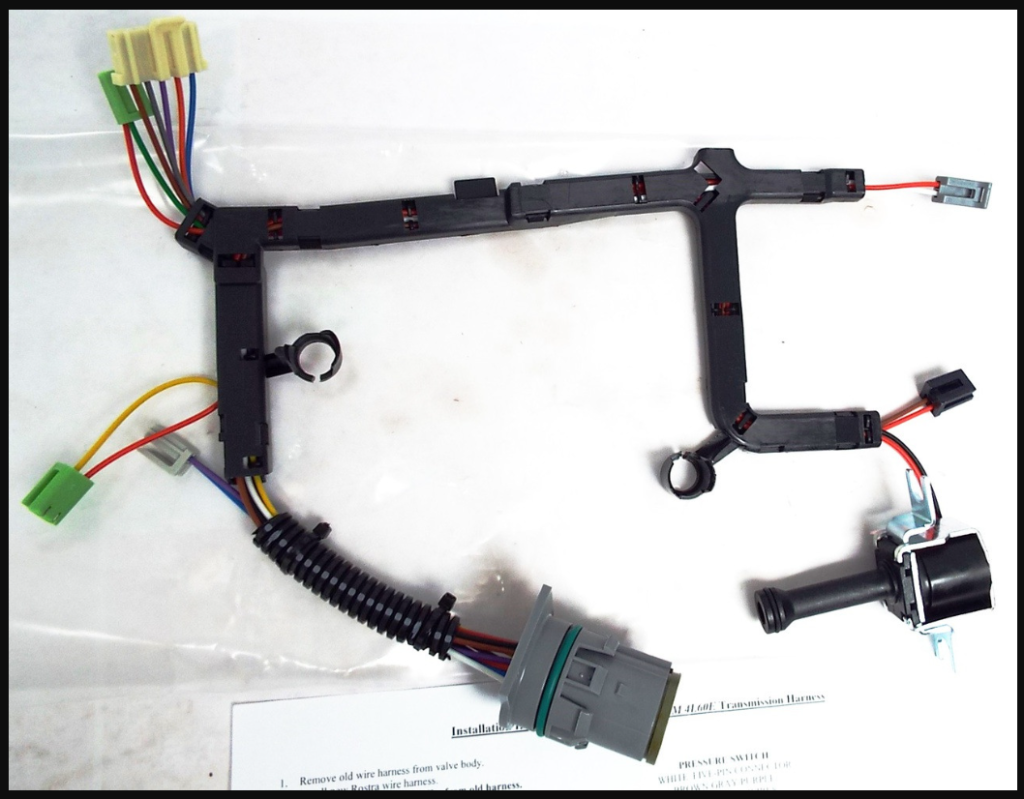How To Bypass TCC Solenoid; Complete Guide
Welcome to EngineRides, and in this article, we will explore the process of bypassing the TCC (Torque Converter Clutch) solenoid in vehicles. This is a common procedure undertaken to address issues related to transmission performance. The article will cover key aspects such as identifying the need for bypassing, the tools required, and a step-by-step guide to perform the bypass.
We will also discuss the implications of bypassing the TCC solenoid and how it affects vehicle performance, so stick around until the end to find out what you’ve been looking for.
Table of Contents
What Is a TCC Solenoid and Why Might It Need Bypassing?
The TCC solenoid is an integral part of a vehicle’s transmission system. It controls the hydraulic fluid flow that engages the torque converter clutch. Sometimes, due to malfunction or failure, it may become necessary to bypass this solenoid.

This can be due to solenoid failure, electrical issues, or as a temporary fix to improve drivability until a full repair can be performed. Bypassing the TCC solenoid is often seen as a stopgap solution to transmission problems like erratic shifting or overheating.
What happens if you unplug the TCC solenoid?
Unplugging the TCC (Torque Converter Clutch) solenoid won’t cause any immediate harm to your vehicle. However, it will disable the lock-up functionality of the torque converter. This results in a loss of fuel efficiency, as the lock-up mechanism helps to reduce fuel consumption at cruising speeds.
Unplugging the solenoid can be a temporary measure, especially if a sticking TCC solenoid is causing the engine to stall at idle, providing a short-term solution to this specific issue.
How do I know if my TCC solenoid is bad?
Identifying a bad TCC (Torque Converter Clutch) solenoid typically involves observing specific symptoms and checking for Diagnostic Trouble Codes (DTCs).
The most apparent sign is the illumination of the Check Engine Light on your vehicle’s dashboard. When the TCC solenoid is malfunctioning, it often triggers a specific DTC, commonly P0740, which indicates an issue with the torque converter clutch circuit.
This code is retrieved using an OBD-II (On-Board Diagnostics) scanner, a standard tool in auto repair shops, and available for personal use. Besides the Check Engine Light, other symptoms like erratic shifting, stalling, or decreased fuel efficiency might also indicate a problem with the TCC solenoid.
How To Bypass TCC Solenoid?
To bypass the TCC solenoid, first disconnect the vehicle’s battery for safety. Locate and disconnect the solenoid’s wiring harness. Then, install a jumper wire or a bypass kit to reroute the electrical signal, effectively bypassing the solenoid’s control. Ensure all connections are secure and check for interference with other components.
The detailed step-by-step guide for the process is explained below.
Why Does The Engine Temperature Spikes Then Returns Normal? A Must Read Guide
ENGINERIDES.COM
01. What Tools and Preparations Are Needed for Bypassing the TCC Solenoid?
Before attempting to bypass the TCC solenoid, it’s essential to gather the right tools. These typically include a
- a basic set of wrenches,
- screwdrivers,
- a multimeter, and
- potentially a replacement wiring harness.
Before getting into the bypassing some preparations involve ensuring the vehicle is parked on a level surface, the engine is off, and the transmission is in neutral or park. It’s also crucial to consult the vehicle’s service manual for specific instructions related to its transmission system.
02. How Do You Locate and Access the TCC Solenoid?
Locating the TCC solenoid involves identifying the transmission area of your vehicle. The solenoid is usually situated near the transmission fluid pan. Accessing it may require the removal of various components, such as the transmission fluid pan or other obstructive parts.
This process should be done carefully to avoid damaging any parts or spilling transmission fluid. It’s advisable to refer to the vehicle’s manual for the exact location and removal procedure specific to your model.
What Are the Steps to Bypass the TCC Solenoid?
Bypassing the TCC solenoid involves a few critical steps.
Step 01: Ensure Safety and Preparation, as mentioned earlier
Step 02: Locate the TCC Solenoid
Step 03: Disconnect the Solenoid’s Wiring Harness
- Carefully disconnect the wiring harness connected to the TCC solenoid.
- It’s essential to do this gently to avoid damaging the connectors or wiring.

Step 04: Install a Jumper Wire or Bypass Kit
- Depending on your vehicle’s requirements, you will either use a jumper wire or a specific bypass kit.
- A jumper wire is used to connect two points in the wiring harness, effectively rerouting the electrical signal around the solenoid.
- If using a bypass kit, follow the manufacturer’s instructions for installation. These kits are designed to easily integrate into your vehicle’s existing wiring.
Step 05: Secure All Connections
- Ensure that all connections are secure and that the jumper wire or bypass kit is firmly in place.
- Double-check that your bypass method does not interfere with any other components and that all disconnected parts are reconnected or secured away from moving parts.
Step 06: Reconnect the Battery and Test
- After the bypass is complete, reconnect the negative terminal of the battery.
- Start your vehicle and test to ensure that the transmission is functioning as expected. Pay attention to any unusual noises or behaviors.
Step 07: Monitor Vehicle Performance
- After bypassing the TCC solenoid, it’s important to monitor your vehicle’s performance.
- If you notice any irregularities or if the original problem persists, consult a professional mechanic.
04. What Are the Implications of Bypassing the TCC Solenoid on Vehicle Performance?
While bypassing the TCC solenoid can temporarily alleviate certain transmission issues, it’s important to understand its implications. Bypassing can lead to decreased fuel efficiency and increased transmission wear over time. It’s a temporary fix that should not replace proper repair. Additionally, the vehicle’s performance may change, potentially affecting shift patterns and overall drivability.
Can you drive without a TCC solenoid?
Yes, you can drive a vehicle without an operational TCC (Torque Converter Clutch) solenoid, especially if it’s stuck in the off position, which is a common failure mode. In this scenario, the vehicle remains drivable, but there are a few caveats. You’ll likely experience reduced fuel efficiency, as the TCC solenoid plays a role in optimizing fuel consumption during cruising speeds.
The check engine light may also illuminate as the vehicle’s computer detects an issue with the transmission system. Additionally, the engine might sound slightly different due to the altered transmission behavior. However, these issues do not typically prevent the car from being driven.
What are the symptoms of a bad TCC PWM solenoid?
A bad TCC (Torque Converter Clutch) PWM (Pulse Width Modulated) solenoid typically presents several noticeable symptoms. These include general poor engine performance and difficulties or failures during gear shifting. Gear slipping, where the transmission seems to change gears unexpectedly or without reason, is a common sign.
Additionally, transmission overheating can occur, which may lead to further damage if not addressed. In some cases, a faulty TCC PWM solenoid can cause the engine to stall, especially during low-speed maneuvers or when coming to a stop.
Alongside these mechanical symptoms, the vehicle’s check engine light will usually illuminate, indicating a problem detected by the vehicle’s diagnostic system.
Is Aftermarket Catalytic Converter Loud? Everything You Need To Know
ENGINERIDES.COM
Conclusion
Bypassing the TCC solenoid is a procedure undertaken to address transmission issues temporarily. It involves locating and accessing the solenoid, using the right tools, and following specific steps to reroute the electrical control. While this can offer a short-term solution to transmission problems, it’s not a substitute for professional repair and can affect the vehicle’s performance and efficiency.
Some Related FAQs,
Can bypassing the TCC solenoid cause long-term damage to my vehicle?
Bypassing the TCC solenoid for an extended period can lead to increased wear and tear on the transmission and reduced fuel efficiency.
Is it legal to bypass the TCC solenoid?
While it’s not illegal, it’s important to note that bypassing can affect emissions and might not be in compliance with certain vehicle regulations.
Can I bypass the TCC solenoid on any vehicle?
While most vehicles with an automatic transmission have a TCC solenoid, the bypass procedure may vary depending on the make and model.
Do I need special tools to bypass the TCC solenoid?
Basic automotive tools are usually sufficient but always refer to your vehicle’s manual for specific requirements.
Should I attempt to bypass the TCC solenoid myself or seek professional help?
If you’re not experienced with vehicle maintenance, it’s safer and more advisable to seek professional assistance.







